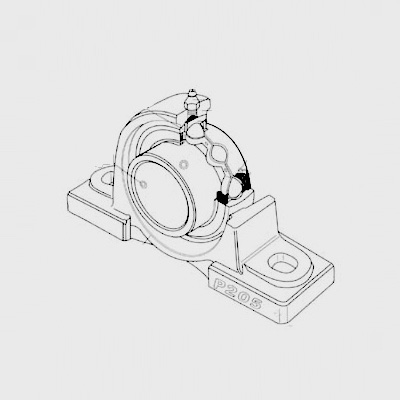
Aug . 19, 2024 21:08 Back to list
Comparison of Deep Groove Ball Bearings and Angular Contact Bearings in Various Applications
Deep Groove Ball Bearings vs. Angular Contact Bearings A Comprehensive Overview
Bearings are essential components in countless machines and mechanisms, allowing for smooth and efficient movement. Among the various types of bearings, deep groove ball bearings and angular contact bearings are two of the most commonly used. Each type has its unique characteristics, advantages, and applications. Understanding these differences can help engineers and technicians choose the right bearing for their specific needs.
Deep Groove Ball Bearings
Deep groove ball bearings are among the most widely used types of bearings in the industry. They consist of an outer ring, an inner ring, a cage, and balls. The design features a deep raceway that allows the balls to keep in contact with the rings, providing stability and support.
One of the primary advantages of deep groove ball bearings is their versatility. They can accommodate radial loads and moderate axial loads in both directions, making them suitable for a wide range of applications — from electric motors to household appliances. These bearings are capable of operating at high speeds and are known for their durability and reliability.
Another significant benefit is the ease of installation and maintenance. Deep groove ball bearings are generally simple to install and, when adequately lubricated, have a long lifespan. They can also operate effectively in varying environmental conditions, as they can be sealed or shielded to protect against contaminants.
Angular Contact Bearings
deep groove ball bearing vs angular contact

Angular contact bearings, on the other hand, are designed to accommodate radial loads and axial loads simultaneously but in a specific direction. They have a different configuration compared to deep groove bearings, featuring inner and outer ring raceways that are angled with respect to the bearing axis. This unique design allows them to bear axial loads much more effectively.
One of the notable advantages of angular contact bearings is their capability to handle high-speed applications where precision is paramount. They are often used in applications such as machine tools, pumps, and gearboxes, where both radial and axial support is required. Furthermore, angular contact bearings can be arranged in pairs to support higher axial loads and provide added stability.
However, angular contact bearings tend to be more sensitive to misalignment and require precise mounting procedures. This characteristic demands more attention during installation and maintenance compared to deep groove ball bearings. Additionally, they are generally more complex and can be costlier due to their design and the need for precision manufacturing.
Choosing the Right Bearing
The choice between deep groove ball bearings and angular contact bearings ultimately depends on the specific requirements of the application. If the application involves moderate axial loads and requires versatility, deep groove ball bearings are likely the best choice. Their ease of installation and broad applicability can enhance overall efficiency in many systems.
Conversely, if the application demands high-speed performance with significant axial load considerations, angular contact bearings would be more suitable. Their design helps maintain precise tolerances and reduces the risk of failure under stressful conditions.
In conclusion, both deep groove ball bearings and angular contact bearings play significant roles in various industries. Their unique strengths cater to different operational needs, making it crucial for engineers and designers to carefully evaluate their requirements before choosing the appropriate bearing type. Whether the priority is versatility or precision, understanding the differences between these two popular bearing types ensures optimal performance in mechanical applications.
Latest news
-
Common Failures in Thrust Ball Bearings and Solutions
NewsAug.22,2025
-
How Tapered Roller Bearings Can Take Shock Loads
NewsAug.22,2025
-
Angular Bearings in High-Precision Spindles
NewsAug.22,2025
-
The Impact of Misalignment on Cylindrical Roller Bearing Performance
NewsAug.22,2025
-
The Role of Cage Design in Deep Groove Ball Bearing Durability
NewsAug.22,2025
-
The Impact of Material Quality on Machinery Bearings’ Lifespan
NewsAug.22,2025
